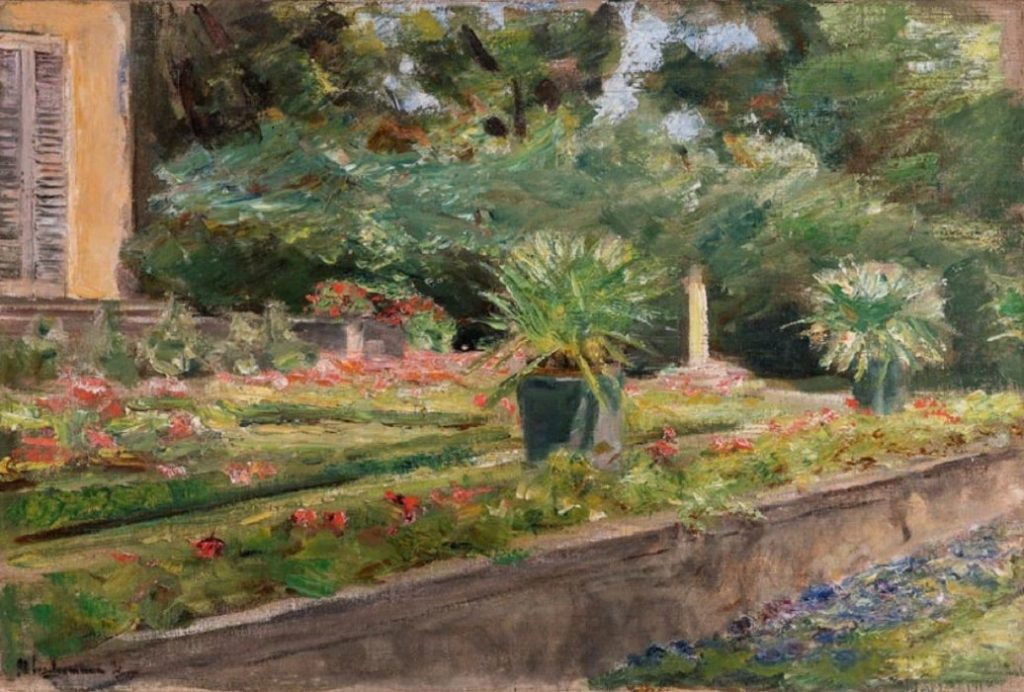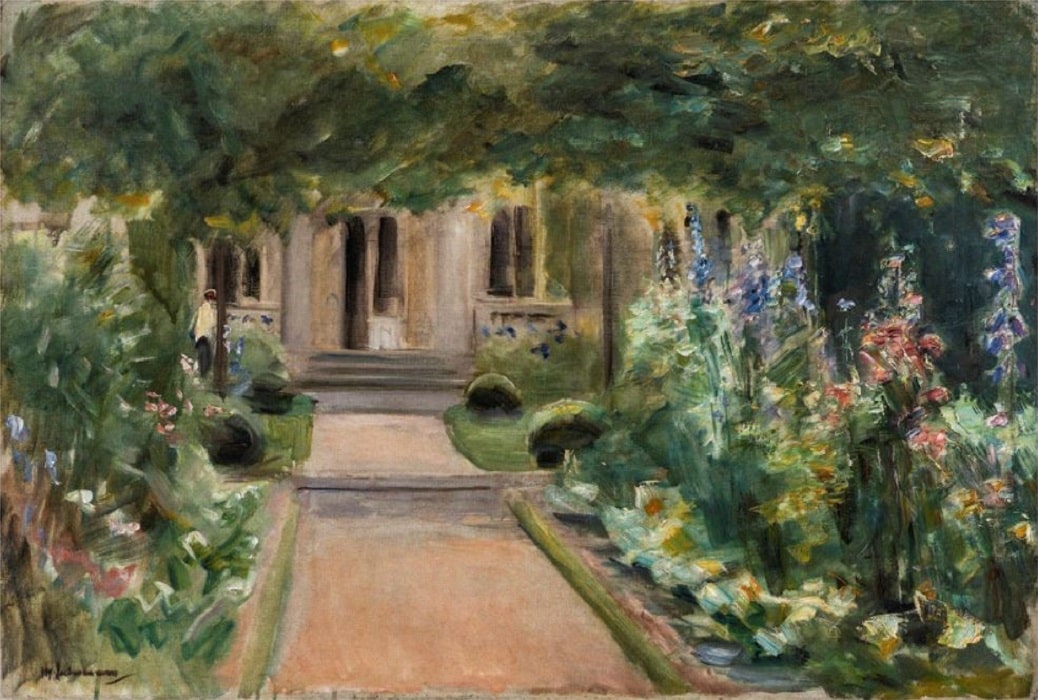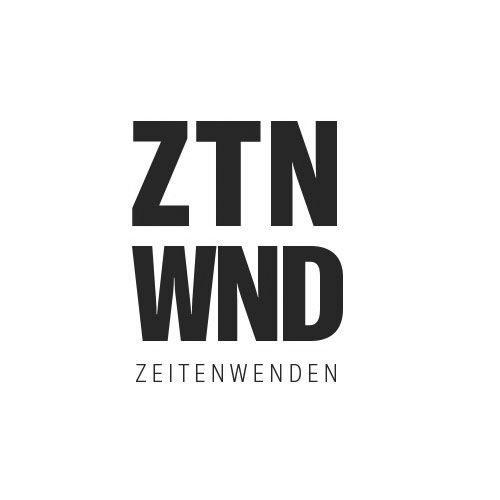From 1 October 2022, the Liebermann Villa am Wannsee will present the results of the museum’s first provenance research project in the exhibition “When Pictures Speak. Provenance Research on the Liebermann Villa Collection”. Since 2020, around 150 works from the collection of the Max Liebermann Society Berlin e.V., the museum’s sponsoring association, have been systematically examined for Nazi persecution-related seizure thanks to generous funding from the German Centre for the Loss of Cultural Property. The focus of the new special exhibition is on the provenances of an exemplary selection from the collection.
Fig. above: Max Liebermann, View from the kitchen garden looking east towards the entrance to the country house, 1919, oil on canvas, 50 x 75 cm, Max Liebermann Society Berlin, photo: Oliver Ziebe.
The exhibition thus also provides insights into the environment of the German-Jewish painter Max Liebermann (1847-1935) and his wife Martha Liebermann (1857-1943). It also addresses the challenges that the field of research poses today. The highlight of the exhibition is the work “Head of a St. Adrian’s Rifleman from 1627, Copy after Frans Hals”, which can clearly be described as Nazi looted art. The extremely generous settlement made possible here by the heirs of Max and Martha Liebermann is a pleasing example of a fair and equitable solution in the sense of the “Washington Principles” of 1998.
DR. LUCY WASENSTEINER, DIRECTOR OF LIEBERMANN VILLA:
“What paths have Max Liebermann’s works taken since their creation until they entered our collection? We owe the fact that we have been able to systematically investigate this long overdue question to the generous support of the German Centre for the Loss of Cultural Property. It enables our museum, which is essentially supported by private funds, to disclose unlawful changes of ownership during the Nazi era and to find a just and fair solution with the heirs of Max and Martha Liebermann.”

DR. JOHANNES NATHAN, CHAIRMAN OF THE MAX LIEBERMANN SOCIETY:
“The exhibition is the result of another important research project of the Liebermann Villa on Wannsee. Since its foundation in 1995, the Max Liebermann Society has built up a collection within a short time. In the course of these acquisitions and donations, it has not always been possible to clearly clarify the provenance of an object. The generous support of the German Centre for the Loss of Cultural Property has enabled us to research the provenance histories in our holdings in greater detail. In most cases, we can now assume that the provenances of the works belonging to us are unencumbered. In one case, however, it has unfortunately turned out that the object in question must be described as looted art. Immediately after learning of this, the heirs of Max and Martha Liebermann, who are entitled to claim the work, were informed. They subsequently offered to reach an extremely generous agreement, for which we are deeply grateful. We are also grateful to the Federal Government Commissioner for Culture and the Media, Claudia Roth, who has most graciously agreed to take over the patronage of our exhibition, thus greatly encouraging us in our work for the memory of Max Liebermann and his family.”
PROF. DR. GILBERT LUPFER, BOARD OF DIRECTORS OF THE GERMAN CENTRE FOR THE LOSS OF CULTURAL PROPERTY
“Works by Max Liebermann, one of the most important German artists of the late 19th and early 20th centuries, are often the subject of provenance research. Many of them were owned by Jewish collectors who were forced to emigrate, plundered and murdered from 1933 onwards. But the Liebermann family itself was also a victim of anti-Semitic persecution and lost its own art collection. The committed provenance research of the team at the Liebermann Villa has now made it possible, among other things, to reconstruct the origin of a painting from the Liebermann collection that the Max Liebermann Society acquired in good faith decades later. This find is a small but by no means unimportant contribution to the clarification of the Nazi art theft and shows how important provenance research is and how meaningful its support by the German Centre for the Loss of Cultural Property is. We are also very happy to support private institutions such as the Liebermann Villa and its sponsoring association, the Max Liebermann Society.”

EXAMPLE OF A “JUST AND FAIR SOLUTION” FROM THE LIEBERMANN VILLA COLLECTION AT WANNSEE
In the course of the research, it turned out that one object in the collection of the Max Liebermann Society clearly qualifies as Nazi looted art. It is a copy of a “St. Adrian’s Rifleman” painted by Liebermann in 1876 after a painting by the Dutch painter Frans Hals (1582-1666). The Liebermann signature on our painting, preserved at the lower right edge of the picture, turned out to be an imprint of the so-called estate stamp with which Martha Liebermann marked all the still unsigned works by the artist in her possession shortly after the death of her husband in February 1935. The signature indicates that the work comes from the art collection of Max and Martha Liebermann.
In the course of persecution by the Nazi regime, Martha Liebermann lost almost all her assets. In autumn 1935, she moved into a flat at Graf-Spee-Strasse 23 (today Hiroshimastrasse); in 1938, she was no longer allowed to enter the family home at Pariser Platz; in 1940, she was forced to sell the villa at Wannsee. In March 1943, she escaped the threat of deportation to the Theresienstadt concentration camp by committing suicide. Shortly afterwards, the Gestapo and the Chief Finance President of Berlin-Brandenburg confiscated and “utilised” her property. Whether the “St. Adrian’s Shooter” was only confiscated then, or whether Martha Liebermann had to sell it earlier because of her plight, could not be conclusively clarified. In both cases, however, the painting can clearly be classified as Nazi looted art.
The work was acquired in 2003 in the post-sale of a Berlin auction for the then young and fast-growing collection of the Max Liebermann Society, founded in 1995, i.e. before the official opening of the museum in 2006. As a result of current research within the framework of the project funded by the German Centre for the Loss of Cultural Property, it has now been possible to reach an agreement with the great-granddaughters of Martha and Max Liebermann who are entitled to claim here. They generously waived compensation or restitution of the painting – under the condition that the fate of the Liebermann family, the provenance of the painting and the extremely accommodating agreement will always be mentioned when the painting is exhibited.
PUBLICATION
Accompanying the exhibition, a free digital publication on new findings in provenance research in the context of Max Liebermann and his network will appear on the arthistoricum.net – ART-Books platform – operated by Heidelberg University. This Open Access publication emerges from the online conference “Provenance Research on Max Liebermann and his Network. Reports from the field”, which was organised by the Liebermann Villa in autumn 2021 in cooperation with Prof. Dr. Meike Hopp, Junior Professor for Digital Provenance Research at the Technische Universität Berlin.
WHERE?
LIEBERMANN-VILLA AM WANNSEE
Colomierstr. 3
14109 Berlin
WHEN?
Saturday, 1 October 2022 until Monday, 13. March 2023
COST?
Regular € 10, reduced € 6
Free admission for children and young people under 18 years of age






